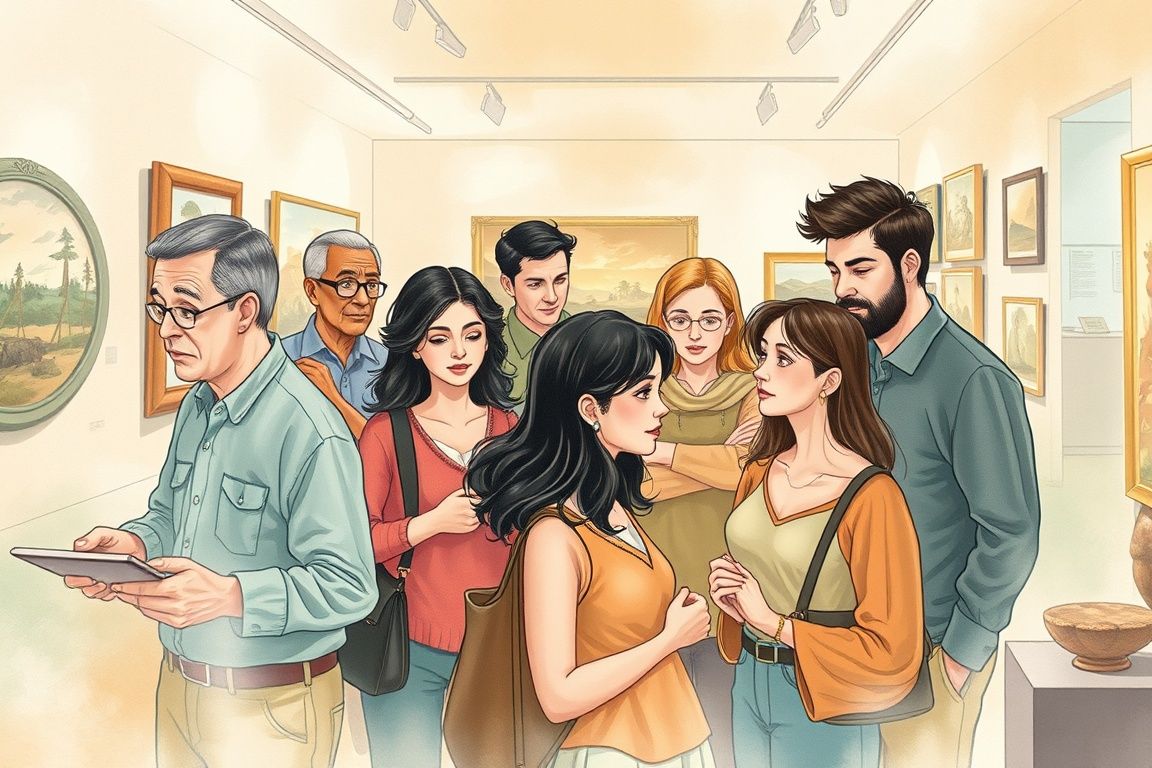Why It’s Worth It
Gain expertise in curating compelling narratives that resonate with diverse audiences.
Enhance your understanding of how to use artifacts and space to tell impactful stories in exhibitions.
Learn from real-world examples and best practices, equipping you with the skills to innovate in the field.
Your Learning Roadmap
Foundations of Museum Narratives
This module provides foundational knowledge on how museums create compelling stories using artifacts and spatial design. It covers the historical evolution of museums, basic narrative theory, and the societal role of curated exhibitions. Participants will gain an understanding of the context and theoretical underpinnings that influence modern museum practices. History and Evolution of Museums Basics of Narrative Theory The Role of Museums in Society
Principles of Curating Narratives
This module dives into the strategies used by curators to select and arrange artifacts, creating a unified narrative flow. Through analyzing both classic texts and modern examples, participants will learn how thematic coherence is established in exhibit design. The module also covers visual rhetoric and the relationship between spatial design and storytelling. Curatorial Selection Design and Spatial Arrangement Visual Rhetoric in Exhibitions
Storytelling Techniques in Exhibitions
This module focuses on the artistic and innovative approaches to exhibit storytelling. Participants will learn how narrative devices, multimedia integration, and emotional engagement work together to create memorable experiences. Drawing on frameworks from popular literature like The Storytelling Animal, this module guides learners in applying these techniques in practical settings. Narrative Devices Integration of Multimedia Creating Emotional Impact
Case Studies and Practical Applications
This module examines case studies from renowned museums and exhibitions. Participants will study both successful and less effective displays to understand best practices in curatorial storytelling. By evaluating real-world examples, the course bridges theory with practice, offering lessons that can be directly applied in the field. Iconic Museum Exhibitions Innovative Exhibition Models Lessons from Failed Exhibits
Visitor Engagement and Interpretation
This module explores methods to connect museum narratives with audiences effectively. Participants will learn how interactive design, educational programming, and digital tools help translate complex stories into accessible experiences. The focus is on optimizing visitor engagement and ensuring that the curated message resonates with diverse audiences. Interactive Design Strategies Educational Programming Digital Interpretation Tools
The Future of Museum Storytelling
This concluding module focuses on future directions in museum curation and storytelling. Participants will explore how digital advancements, immersive technology, and sustainable practices are redefining exhibit experiences. Emphasis is placed on adaptive strategies and innovative thinking to prepare museums for evolving audience expectations. Emerging Technologies Sustainable Narrative Practices Future Trends in Curation
What Users Are Saying
All You Need to Know
Enroll Now!
Interactive modules with real-time Q&A
Case studies for practical insights
Personalized feedback and guidance
Flexible learning schedule at your pace
In-depth analysis of successful exhibitions
Cutting-edge techniques for modern storytelling

